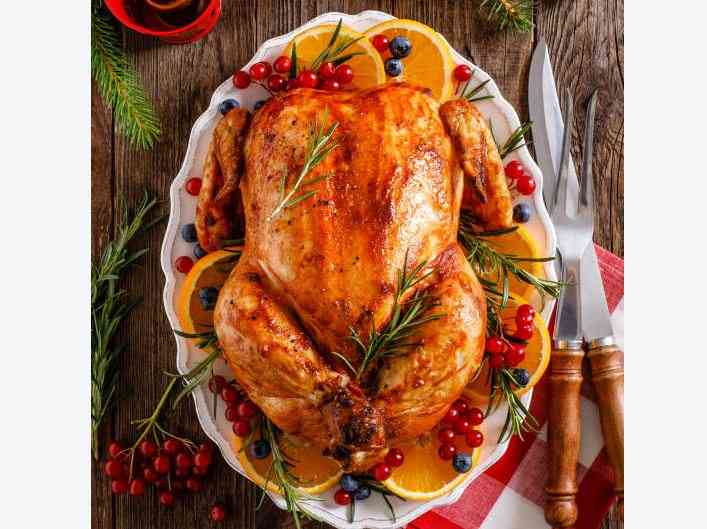
Turkey is popular in December in many places, symbolising abundance and togetherness, but it does not have to stop there. You can make turkey part of your diet this year.
Here's a turkey recipe courtesy of Chef, Wayne Walkinshaw, Executive Chef, Radisson Blue Hotel in Upperhill, Nairobi.
This diabetic-friendly recipe focuses on reducing sugar, carbs, and unhealthy fats while maintaining flavour.
Ingredients: Brine (strongly concentrated solution of water and salt); butter; fresh herbs (thyme, rosemary, and sage) truffle (if you can get, and afford it) is really good with turkey; Garlic; Lemon and orange zest; salt; vegetables for roasting (onions, carrots, celery, and garlic bulbs, quartered); stock; stuffing a mixture of bread cubes, dried cranberries, walnuts, sauteed onions, and celery).
Method
Make sure you pat the turkey dry with paper towels, after brining.
Mix the softened butter with chopped fresh herbs and aromatics.
Gently loosen the skin over the turkey breasts with your hands and rub half of the herb butter underneath. Spread the remaining butter over the surface of the turkey
- Mbuzi wet fry 'goat fry'
Keep Reading
Place the quartered vegetables in the bottom of a large roasting pan to act as a trivet. Pour in the stock.
If using stuffing, fill the turkey cavity loosely with the prepared mixture. Or you can cook the stuffing separately.
Place the turkey breast-side up on top of the vegetables. Cover loosely with aluminium foil
Roast in the preheated oven for 13-15 minutes per 500g. For a 7 kg turkey, this is approximately 3-3.5 hours
Every 30 minutes, remove the foil and baste the turkey with the pan juices.
For the final 30-40 minutes, remove the foil completely to allow the skin to turn golden and crispy.
Remove the turkey from the oven, tent it with foil, and let it rest for 20-30 minutes. This helps the juices redistribute.
NB: A thermometer is used to measure the internal temperature of food to ensure it has reached a safe and desired level of doneness. Use a meat thermometer for the turkey - the breast should reach 75 degrees Celsius and 80 degrees Celsius for the thighs. This ensure the turkey is fully cooked and ensures it is juicy and safe.
To keep the Turkey moist and flavourful, butter under the skin, baste frequently and rest the turkey to prevents the juices from escaping when carving and avoid overcooking.
For a diabetic-friendly turkey meal,replace butter with olive oil for a heart-healthy fat, avoid carb-heavy stuffing and using low-carb vegetables to fill the cavity, use fresh herbs, citrus, and garlic for flavour instead of sweet or carb-rich glazes and thicken gravy with vegetable puree or almond flour instead of flour or corn-starch.
 The Standard Group Plc is a multi-media organization with investments in media
platforms spanning newspaper print
operations, television, radio broadcasting, digital and online services. The
Standard Group is recognized as a
leading multi-media house in Kenya with a key influence in matters of national
and international interest.
The Standard Group Plc is a multi-media organization with investments in media
platforms spanning newspaper print
operations, television, radio broadcasting, digital and online services. The
Standard Group is recognized as a
leading multi-media house in Kenya with a key influence in matters of national
and international interest.


